How to Make Natural Candles
When preparing to make natural candles, the first thing you’ll want to choose is the type of natural wax you want to use. Today, there are more choices than ever! Each has its advantages, along with a few drawbacks you should consider.
Natural Wax Candle Project Idea
We’ve have had the opportunity to experiment with many different coconut waxes and, so far, we’ve found the coconut apricot wax to be the most fun. This wax is easy to work with, very forgiving and offers great fragrance throw. Here’s how to make a natural candle using this wax.
Materials
You will need:
• 6-pack of Coconut Apricot Wax Blend
• 4-ounce Jelly Jar
• Fragrance (we recommend our combo packs)
• Diamond Chips
• Pouring Pot
• Thermometer
• ECO-6 Pre-Wick Assembly
• Bow Tie Wick Bars
• Glue Dots
• Burning Instructions
Directions
Step 1: Prepare Your Work Surface
Prepare an area to pour your candles by placing newspaper or large sheets of paper on a firm, flat surface.
Step 2: Apply a Glue Dot and Pre-Wick Assembly
Take you Glue Dot and apply it to the bottom of a Pre-Wick Assembly. Then place the Pre-Wick assembly with the secured glue dot at the bottom of your container. Be sure the wick assembly is centered. To help make the process even easier, we recommend using a Bow Tie Clip.
Step 3: Heat Candle Wax
Add 1lb. of wax to your pouring pot. Heat the wax by placing the pouring pot into a large pot of water that has been brought to a boil. This will create a double boiler. Don’t ever place the pouring pot onto a source of direct heat.
Step 4: Add Dye
Add the desired amount of Diamond Chips into the wax at 180°F, and mix until the candle dye is completely melted in the wax. Mix thoroughly.
Step 5: Add Fragrance (Check out some of our 100% natural fragrances!)
Add fragrance to the wax. Use 1oz. of fragrance per 1lb. of wax.
Step 6: Pour Wax
Once the fragrance is added, pour the wax into the container when the temperature of your wax reaches 170°F. Fill the container until the wax reaches the groove in the jar, about 1/4″ from the top.
Pour the remaining candles. You should be able to make 3-4 candles per 1lb. of wax, depending on how far you fill your containers.
Step 7: Trim Wick
Once your candles have cooled completely, trim the wicks so that they are only 1/4″ and place an instruction label for burning the candle on the bottom of each container.
Step 8: Enjoy!
Allow your candles to sit for at least 24 hours before lighting, then enjoy your natural candle!
Natural Candle Waxes
 Soy Wax
Soy Wax
Soy wax is the most popular type of natural candle wax. Because soy is grown domestically by U.S. farmers, soy wax tends to be less expensive than other types of natural waxes. You also can purchase soy wax flakes to make measuring and handling soy wax even easier. And, soy wax candles don’t require any additives or a second wax pour to top off your candles.
There are some downsides to using soy wax for your natural candles, however. First, their ability to deliver fragrance throw is not as effective as other waxes. Also, soy wax can only be used to make container candles, not pillars or votives. Another drawback is that soy wax has an extremely low melt point of 115-118°F, so, if you were planning to market and ship your natural candles to warmer climates, this may not be the right choice.
 Palm Wax
Palm Wax
Palm candle wax is another excellent alternative for your natural candles. Unlike soy wax, you can use palm wax by itself to make pillar candles. You also can mix palm wax with soy wax to create a wax blend that you can use to make pillars with soy wax in them.
Palm Wax is made from tropical oils and their derivatives. It has a beautiful, crystalized or feathering surface finish, which you should maximize by using aluminum molds for your palm wax pillars. Palm candle wax also has excellent burning qualities. In addition, palm wax offers superb color stability through a wide range of colors, from pastels to primaries to deep, rich tones.
Palm wax does present some challenges, however. It has a high acidic value, so we suggest that you choose wicks that work well with palm wax, including our RRD, CD, HTP, and ECO series as well as our LX 22, 24 & 26 wicks. Palm waxes also can be tricky to use with certain types of candle dyes. However, our color blocks have all been tested with our palm waxes and work very well.
 Beeswax
Beeswax
Of all the waxes used to make candles, natural beeswax is considered to be the most elegant and prestigious. It’s also often the most expensive. Candles made from beeswax or beeswax sheets burn very slowly and cleanly and emit the sweet aroma of honey.
You can use beeswax on its own to make natural candles, or you can blend it with soy wax to help improve the overall quality of and increase the burn time for your soy wax candles. Like palm wax, you can use pure beeswax to make pillar candles.
Besides the higher cost, beeswax does have another drawback. Its soft, tacky properties can make it difficult to release from your candle molds in some cases. Because of this, we recommend that you use a silicone spray with your molds when making beeswax candles.
Other Natural Waxes
There are other types of natural candle waxes and natural wax blends. Among Candlewic’s other natural candle waxes are coconut oil wax and coconut-apricot blend.
Coconut Oil Wax Blend
This 100% natural coconut oil wax blend has excellent fragrance throw and displays good burning characteristics. It also offers great adhesion to the side of glass jars and should only be used for making container candles.
Coconut Apricot Candle Wax
Coconut apricot candle wax is a natural candle wax that is delightfully blended with coconut and apricot. This unique blend produces rich and smooth candles that adhere well to containers. It offers great fragrance through and has good burning characteristics.

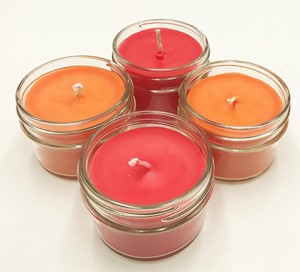
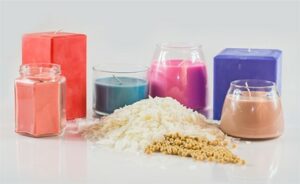
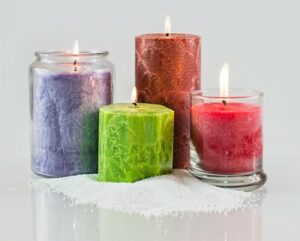
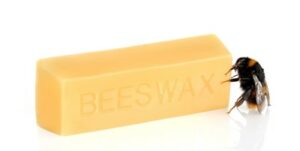
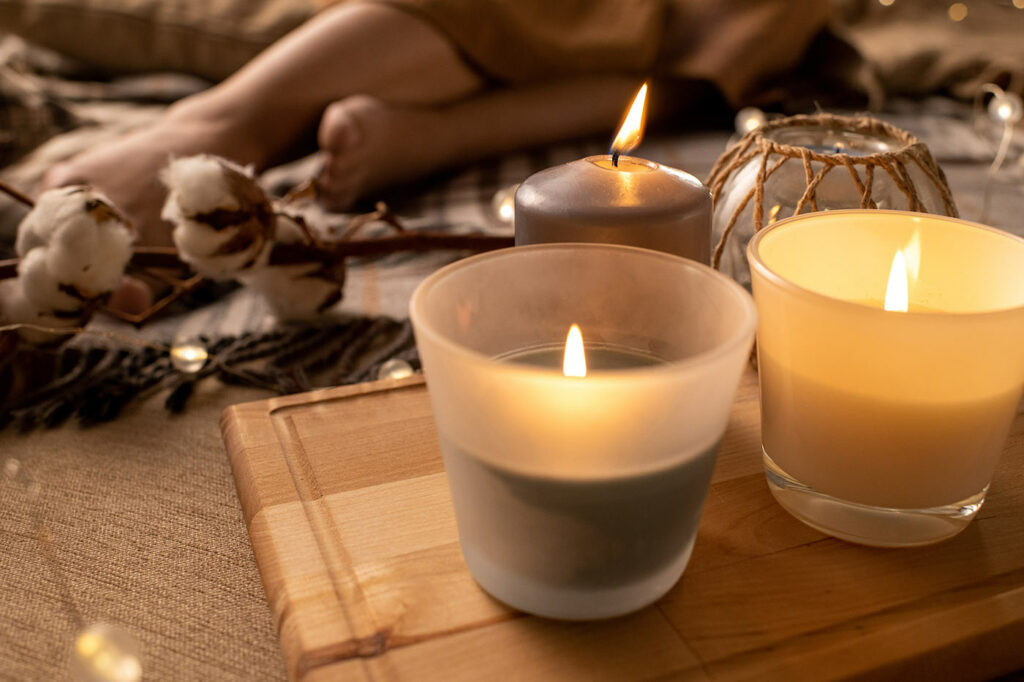
It’s so helpful to know that we should be putting the diamonds in at around 180 degrees to get them to melt. My aunt is getting into candle making right now and she wants to learn how to get better. I think she should visit some craft stores online and in-person to get advice and the best products for us.
Very great information.
I’m looking for a wax that burns clean. My Dad gas COPD and would like to burn a candle. Could you put the natural waxes in order from cleanest to least clean burn?
I am new to candle making but looking forward to giving it a go.
Angel
When it comes to clean burning all waxes are very similar. They key is the amount of fragrance added, which fragrance, the wick selected and burn time. Most candles can burn “cleaning” or can result in smoking, sooting and other negative properties if all of these are not designed as a complete “system”. It is alway imperative that the wicks be tested with the complete fragrance load, color and wax combination.